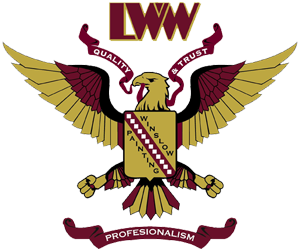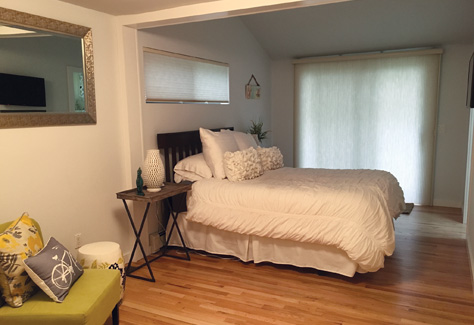When painting the inside of your home and your paint went on the wall perfectly, finishing with a smooth and even coat, your painting project was a success. However, if later you noticed that there are drip marks on your freshly painted walls, you are not crazy. When drip marks appear when they were not there before, this is a phenomenon known as surfactant leaching. L.W. Winslow Painting, Inc would like to share what surfactant leaching is, why it happens and how to fix it.
What Does Surfactant Leaching Look Like?
Surfactant is a painting term that is short for “surface active agents” which are compounds that are added to paint during the pigmentation dispersion process. The surfactant compounds are designed to improve the stability of the paint and help the paint to spread over the surface more evenly. The surfactant compounds usually dry off as the paint cures or seals. Depending on the environmental conditions such as humidity, damp or cold temperatures, it can cause the compound to rise or “leach” to the surface of the paint. The leaching compounds often look glossy or greasy.
Why Does Surfactant Leaching Happen
Surfactant leaching can be caused by humidity. Humidity can cause moisture to become stagnate on the wall and on the surface of the paint during the drying process. The moisture will encourage the leaching phenomenon to occur. Along with humidity, low temperatures can also cause leaching. When the temperatures are between 50 and 90 degrees Fahrenheit, the paint struggles to dry fast enough and bind to the surface. To avoid binding and possible leaching problems, you should always paint in 90 degree or warmer temperatures. It also helps to have good air flow and ventilation. Lastly, dark paint colors are more prone to surfactant leaching. When using a dark color be sure to provide good air flow and even use fans to help dry out the paint. Avoid painting with dark colors in cool or humid days to reduce the chance of surfactant leaching.
How Do You Fix Surfactant Leaching?
When surfactant leaching occurs, the only way to fix the problem is with another coat of paint. However, before you repaint the walls to fix surfactant leaching you will need to remove any globs of paint and wash the surface of the walls. Do this by using warm water with a liquid dish soap to create a mild soapy water mixture. Use a cloth or sponge to clean the site where the surfactant leaching has occurred. Make sure to thoroughly remove the greasy film before repainting. When painting over the surfactant leaching sites, make sure the air is dry and it is the right temperature to prevent the problem from reoccurring.
Interior & Exterior Painting & More in Amagansett, Bridgehampton, East Hampton, Hampton Bays, Montauk, North Haven, North Sea, Noyack, Shelter Island, Sag Harbor, Shinnecock Hills, Southampton, Springs, Water Mill, Westhampton & Westhampton Beach, New York
Surfactant leaching, depending on the climate, can be a common problem. This is why it is important to paint the inside or outside of the home in the right conditions. If you are unsure as to how to fix surfactant leaching, or need professional painting services, contact L.W. Winslow Painting, Inc and schedule our services today.


